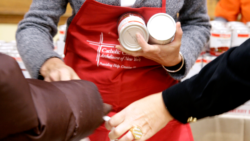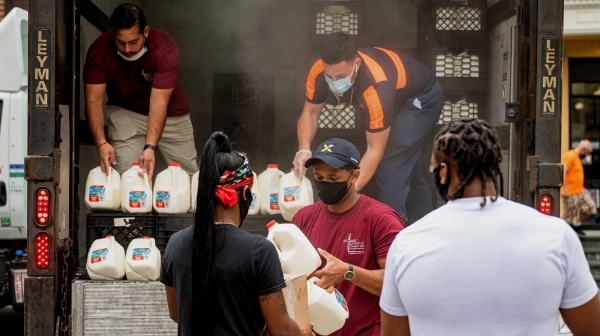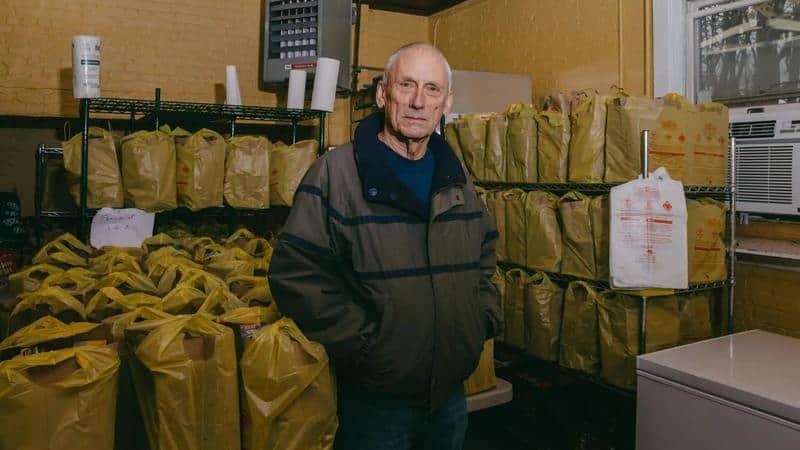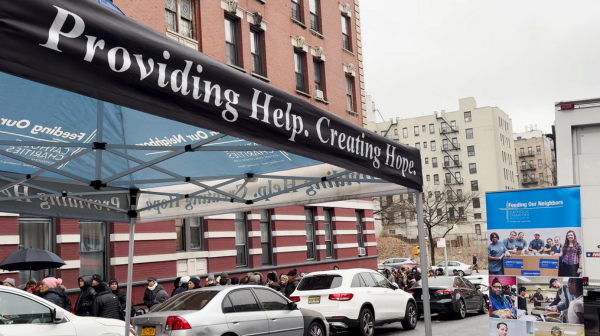A 2021 Census survey revealed that more than half a million families in the New York Metro Area sometimes or often don’t have enough to eat. If you have trouble believing that in the 21st century in the “city that never sleeps” that 1 in 10 families suffer from that level of hunger, you’re not the only one mystified.
Catholic Charities of New York has several core missions including meeting the needs of at-risk youth and families, combating homelessness, supporting those with mental or physical disabilities, and helping immigrants and refugees. But one could make an argument that what the public sees the most is their mission to feed the hungry – or in more modern terms, ‘addressing food insecurity‘. During a 6-month period during the height of the Coronavirus, Catholic Charities distributed over 8 million meals to hungry New Yorkers. That number is now in excess of 10 million meals provided. They also recently sent representation to the USDA to make the argument to expand the Supplemental Nutrition Assistance Program.
A recent article by the New York Times, explored some of why New York’s persistent food crisis has been hard to overcome and who or what might be the best hope for beating it.
THE FOOD IS THERE
Let’s see some numbers with help from the New York City Food Policy Center:
In 2018, City Harvest collected 55 million pounds of excess food from restaurants, grocery stores, bakeries, manufacturers and farms and delivered it free of charge to 500 community food programs across New York City.
According to New York’s Department of Agriculture and Markets, in the 5 Counties of New York City there are over 13,600 retail food stores.
The Food Recovery Network, a national network with chapters in 20 colleges and universities across New York, diverted more than 2 million pounds of wasted food from landfills to nonprofits with their food scrap diversion program.
Rethink Food NYC takes excess food from grocery stores, restaurants and farmers’ markets and transforms it into meals offered at little or no cost to families across New York City.
Community Solidarity which serves Long Island, feeds 15,000 people a week.
The National Resources Defense Council conducted a food waste assessment in the industrial, commercial, and institutional (ICI) sectors of New York City. They found that New York City’s ICI sectors produce over 593,000 tons of food waste per year, 10% of which comes from grocers and markets, 15% from food manufacturers and processors, and a whopping 44% from restaurants and caterers.
A MISCONCEPTION ABOUT FOOD QUALITY
“The landscape of surplus food is impossibly vast,” John Stepanian told the NYTimes. “Waste is built into the whole business model of the food industry. People hear “food rescue” and picture loaves of day-old bread and bags of bruised apples, but that’s just a very small part of it.”
When Catholic Charities distributes food, a lot of thought goes into balancing the nutritional value of the food. There is a focus on providing variety to feed entire families. Often, the food distributed by Catholic Charities is donated from generous benefactors in the food industry.
At least half of what Community Solidarity distributes is fresh produce. That’s because the food they rescue isn’t coming out of old trash bins, it’s coming from unexpected sources like
- Stores that discard food mislabeled by the packagers (labeling pineapples as “pickles” for instance)
- Stores that discard deliveries to the wrong location
- Overorders of product a store doesn’t have the room to shelve
- Purveyors who aren’t satisfied the quality of a high-end product
- Overstocks at other food pantries
- Producers like industrial bakeries, farms or farmer’s markets
- Restaurants that overpurchased or have unserved food by-products
The point is that the food is there, and the volunteers and organizations to rescue it are also there. More urgently, the need is still there. Collaborations and cooperation with suppliers, agencies, and other such organizations are vital, so that one day, all families will have enough food for healthy living.













